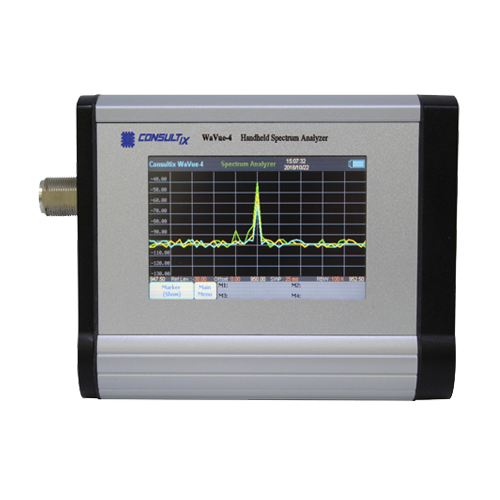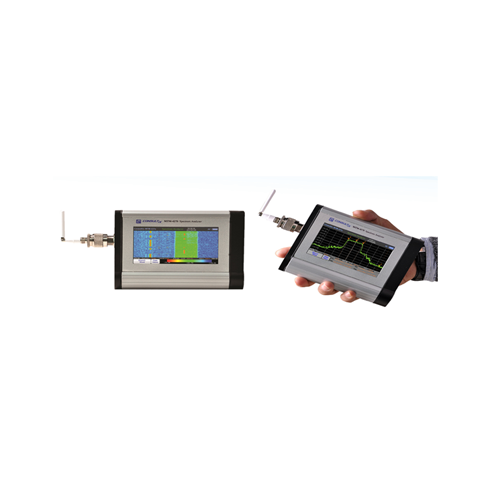![]() +971552579247 | Call Us: +971559994937
+971552579247 | Call Us: +971559994937
What is a RF Spectrum Analyzer & What Does it Do?
 What is a RF Spectrum Analyzer & What Does it Do?
What is a RF Spectrum Analyzer & What Does it Do?
Signals are an essential part of the transmission, without which establishing any connection is impossible. Areas where you can use a physical connection also require the transmission of signals through the existing mediums. To explain simply, signals are the key elements that move forward or backward to establish a concrete connection. They are invisible and intangible. There are many types of signals that you can commonly hear of. Spectrum analyzers are the equipment that measures the signals.
Why measure:
Different signals, including electrical, optical, radio frequency, etc., needs the right instrument to measure their quantities. The non-physical nature of these signals makes it hard to catch the right range and conduct the measuring techniques. There are different types of spectrum analyzers that are essential for distinct signals. RF spectrum analyzer measures radio frequency in a system.
Clarify the concept
Before getting into the details of the RF spectrum analyzer, first know the sectors where RF plays a part. Radio frequencies are different from electrical signals and optical ones in more than one way. These waves act as a great source of transmitting elements in communication systems. You can find the use of RF in components like:
- Transmitters
- Receivers
- Computers
- Televisions
- Mobile phones
- Control circuits
Radio frequencies require a reliable instrument to measure the power of the wave. An RF spectrum analyzer works as a testing instrument for the waves and yields an accurate outcome.
Analyzing process
In a radio frequency analyzer, the input signal is the radio wave. The machine conducts a measuring technique to draft the amplitude of the passing wave. The two components get defined on the X and Y-axis. Amplitude refers to the vertical Y-axis, while frequency refers to the horizontal X-axis. The amplitude v/s frequency graph combinedly provides the output of the frequency domain. You can obtain useful insights about the input signal through this analyzed graph.
- Components analyzed:
Through the RF spectrum analyzer, you can get a clear idea about the performance of the RF modules in the associated system. The useful information you get derives from analyzing the following factors related to the radio wave: Frequency, power, distortion, harmonics, bandwidth, etc. Observing the spectrum graphs, you can gather a clear idea about the condition of the related system.
 Coming to the uses
Coming to the uses
As you know by now, that radio waves are an imminent part of multiple transmission systems. Thus, the spectrum analyzer that measures it also has significant utility. The said instrument is a part of laboratories and research centers that conduct transmission experiments. Also, they are a crucial part of the manufacturing unit of electronic industries. These perform the essential testing that validates the proper functioning of the input wave inside the system.
- Growing importance: With the growing time, RF analyzers have become a part of many industries. In wireless communication systems and transmission units, radio waves are a constant part. Any communicating device you see, be it a Wi-Fi, mobile phone, wireless remote sensors, etc.; All these applications require the assistance of the spectrum analyzer to ensure workability and other insights to the system.
- Detection requirements: Besides the involvement of the RF spectrum analyzers in the understanding of the system’s insights, there are other uses. In practical working systems of transmission and communication, these instruments work efficiently to inspect abnormalities. By analyzing the nature of the input wave in concern, you can detect the signal's general problems. The accurate output of the analyzer saves resources and time in combating the shortcomings of the established communication system.
Usage information
The spectrum analyzers that measure the radio signals are of multipurpose use. You can use them both in laboratories and for fieldwork. The design of the instruments and working capacity makes them fit for both uses. The internal system combines state-of-the-art reception methods and analyzing features to produce a reliable output. It is popular with both the industrial sector and research purposes for the compactness of the unit. Easy to port and ability to test under demanding physical conditions make it apt for practical utility.
- While you select: Now that you have a basic idea about the RF spectrum analyzers, you can easily buy one for your use. But there is more than one factor that plays a role in determining the right functionality of the involved instrument. The specifications of the analyzing units vary as per the input capacity. Depending on it, you can understand and measure the signals in the system. As the specifications impact the machine's performance, it is essential first to understand your individual need. Keep a note of it alongside the output and phase noise performance accuracy while making a selection.
Concluding
So, that was all about the topic in discussion. Wrapping up the writing with the basic explanation of the RF spectrum analyzer and its distinct uses. Reading this will certainly increase your knowledge on the said topic.
